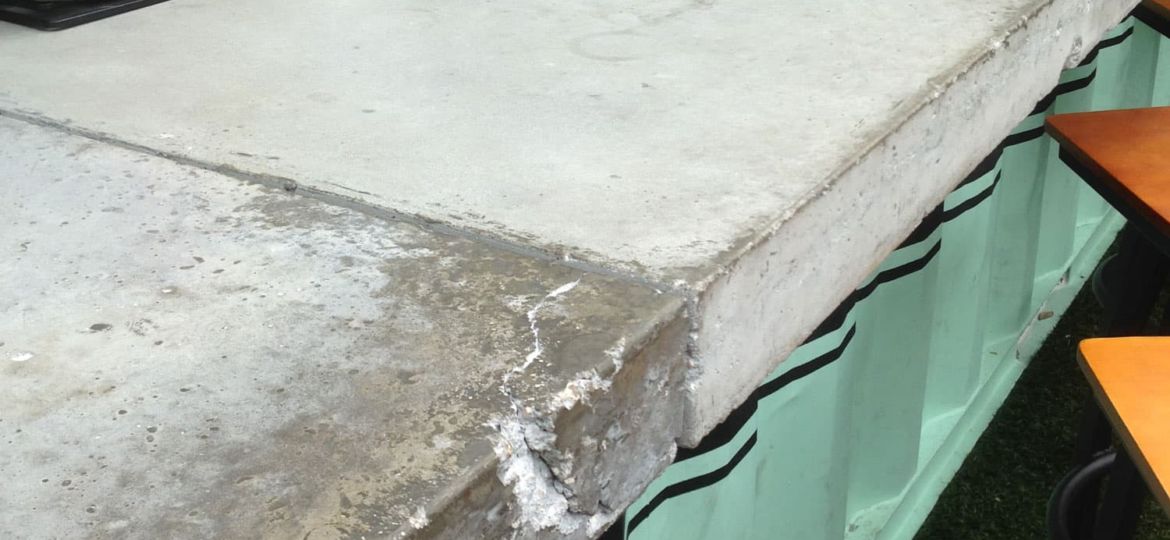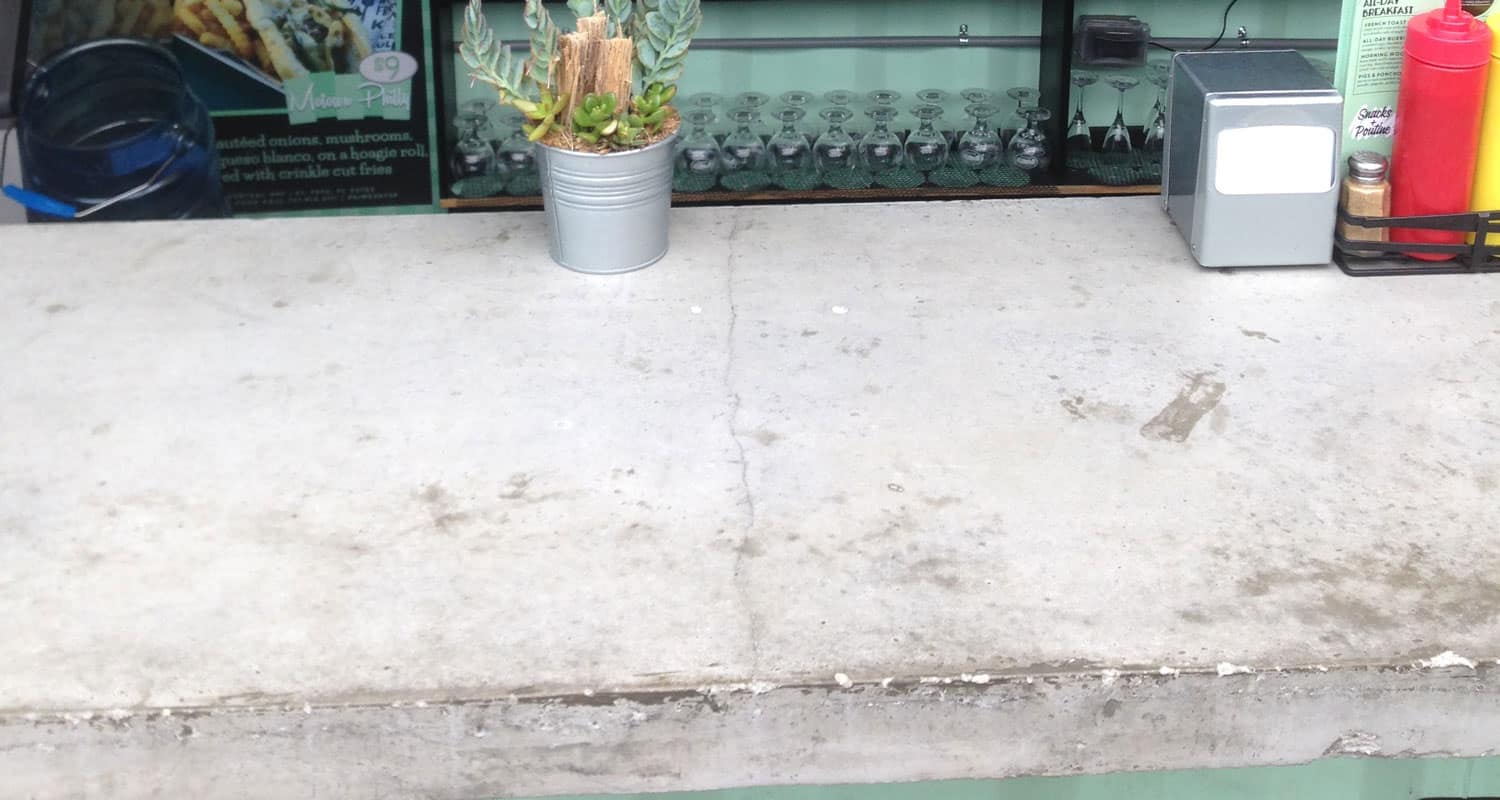
This post is the first in a series of publicly shaming terrible concrete countertop and sink jobs. While I try to refrain from passing judgement on other people’s concrete, work like this, quite frankly, pisses me off on several levels:
- It is a terrible use of natural resources
- It isn’t sustainable
- It gives what I do a bad reputation
- Sets unrealistic expectations for people who may be considering concrete as an option for countertops
Let’s start with bullet point numero uno:
Bad Concrete Countertops Are a Waste of Natural Resources
One of the most admirable traits of concrete is that, if done correctly, it can last for millennia. For evidence of this, look no further than the Dome of the Pantheon. This is the world’s largest unreinforced concrete dome and has endured for nearly 2,000 years. It has an impressive diameter of ~142 ft. Even if you don’t know much about concrete or engineering, this is an impressive study.
The shitty concrete countertops in the photo above will not last 2,000 years. This particular restaurant hasn’t been open for 6 months and the countertops are already falling apart. Right down the street, I made some concrete countertops for another local commercial establishment. After nearly 3 years of service, they still look fantastic and the owners love the way they are aging. There are no cracks in the tops I made, even though they are cast 3/4″ thick. This is because I use ultra high-performance concrete mixes and not bags of concrete mix from the local box store. Regardless of what type of concrete was used, the bad countertops shouldn’t be cracking off in big chunks like that. This is most likely due to using too much water and improper curing, which yields a weaker mix.
Bad Concrete Countertops are NOT SUSTAINABLE
“Got it,” you say, “These countertops will have to be trashed and they’ll make some new ones. Move on.” “Not so fast,” says I. The making of cement, which is the glue that holds concrete together (or doesn’t in the case of our crap-crete countertops in question), contributes around 5% of the world’s CO2 emissions. That is a big deal when we are experiencing global warming at an alarming rate. I fully believe we need to be aware of the things we make and the impact that has for future generations of humans.
Bad Concrete Countertops Cheapen My Profession
The thing is, if you want something that looks worn and aged, I can make that for you and it won’t be something that will fall apart. But by being cheap, they ended up with something that is ultimately going to cost them so much more in the long run. For consideration, let me pose the following questions:
- How much revenue will be lost when this section of the restaurant closes to replace the dilapidated turd of a countertop?
- How much will it cost in lawsuit resulting from the chunk of concrete that falls on someone’s foot or, worse yet, a child?
There is a saying amongst craftsmen that comes to mind now, ‘Good work isn’t cheap, and cheap work isn’t good.’
Bad Concrete Leaves a Bad, and Lasting Impression
From time to time, when explaining my profession to new acquaintances, I hear the story of someone’s friend/relative who had concrete countertops that looked like a sidewalk on top of cabinets. Undoubtedly, this is the type of thing they’re talking about. Every time one of those conversations takes place, it takes easily triple the amount of effort for me to convince them that it can actually be quite elegant. That’s it. Rant over…for now! Be on the lookout for crap-crete countertops and sinks and send them my way if you’re so inclined. And if you have or make Bad Concrete, you better watch out because yours will be the next project to be publicly shamed.
Cheers,
Jonathan


